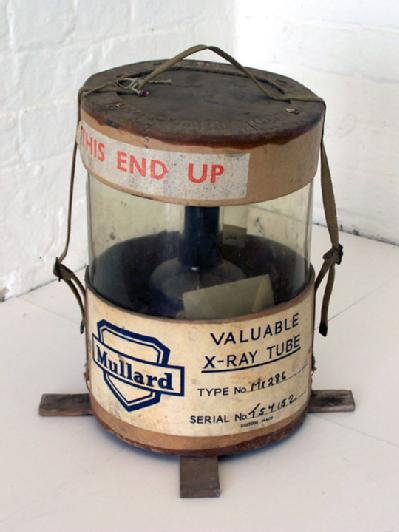X-ray machine bulb in crate for transportation
|
In 1913 William Coolidge improved upon the Crookes tube by inventing the Coolidge tube. In this particular X-ray tube, the electrons are produced by a tungsten filament heated by an electric current. The filament is situated at the cathode end, and electrons are directed straight at the anode end. Consequently, the results produced by the Coolidge tube were far more uniform than those of the Crookes tube, enabling greater accuracy in diagnoses.
|
 |
Keywords for this page
Pages like this
Search for similar pages. Select keywords from the list above (click to select, click again to deselect). Choose page types:
InterviewsObjects
Testimonials

